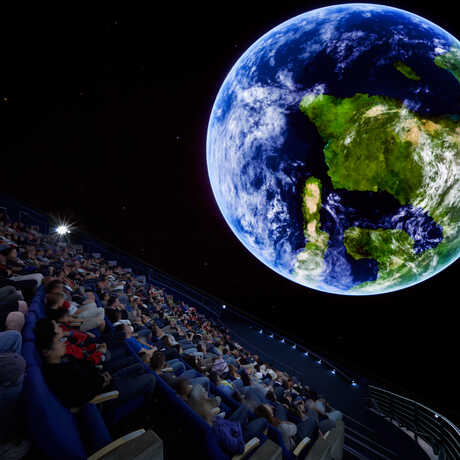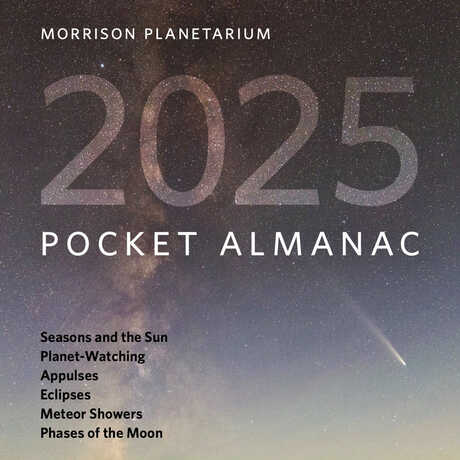From outer space to Earth's inner core, explore the universe from Morrison Planetarium's 75-foot digital dome.


This illustration shows a phenomenon known as gravitational lensing, which astronomers use to study very distant and very faint galaxies. Lensing clusters are clusters of elliptical galaxies whose gravity is so strong that they bend the light from the galaxies behind them. This produces distorted, and often multiple, images of the background galaxy. But despite this distortion, gravitational lenses allow for greatly improved observations as the gravity bends the light’s path towards Hubble, amplifying the light and making otherwise invisible objects observable. Credit: NASA, ESA & L. Calçada
The Most Powerful Zoom Lenses in the Universe
Monday, August 11, 7:30 pm
Morrison Planetarium
Featuring Dr. David Pooley, Trinity University
Delve into the profound and captivating realm of gravitational lensing, a cosmic spectacle predicted by Albert Einstein's revolutionary theory of General Relativity. This isn't merely a scientific curiosity; it's an unparalleled astronomical instrument, surpassing the capabilities of any telescope we could realistically construct in the foreseeable future. We will embark on a journey to comprehend how immensely massive objects, such as galaxies, exert a powerful gravitational effect that warps the fabric of spacetime itself. As light travels through this distorted spacetime, it doesn't travel in a straight line but follows the curved path dictated by gravity. This bending of light is called gravitational lensing, where light from distant sources, such as luminous quasars situated at the farthest reaches of the observable universe, is deflected and magnified as it passes by intervening massive objects. Explore how this cosmic phenomenon enables astronomers to achieve unprecedented levels of resolution and magnification, unveiling quasars' intricate and minute structures with remarkable clarity, akin to using a powerful magnifying glass. Moreover, discover how gravitational lensing is an invaluable tool for mapping the elusive dark matter. Unravel the secrets hidden within the distorted light of distant quasars and unlock insights into the nature of dark matter, pushing the boundaries of our understanding of the universe beyond what was previously thought possible.

David Pooley is a Professor in the Department of Physics & Astronomy at Trinity University in San Antonio, Texas, and recently won the 2024-2025 Distinguished Scholarship, Research, or Creative Work or Activity Award. He has a broad range of interests in high energy astrophysics including supermassive black holes, supernova explosions, and close binary systems in dense stellar clusters. He received his PhD from MIT in 2003 and was subsequently a Chandra Fellow at UC Berkeley. He is dedicated to mentoring undergraduate research, having supervised over 40 undergraduates to date in obtaining, reducing, and analyzing data from Chandra, XMM-Newton, Swift, Fermi, Hubble, Spitzer, GALEX, and ground-based observatories. He is currently chair of NASA's Physics of the Cosmos Program Executive Committee and chair of the Chandra Users' Committee.
From outer space to Earth's inner core, explore the universe from Morrison Planetarium's 75-foot digital dome.

Download Morrison Planetarium's 2025 Pocket Almanac to stay up-to-date on eclipses, meteor showers, satellite spottings, and more.
